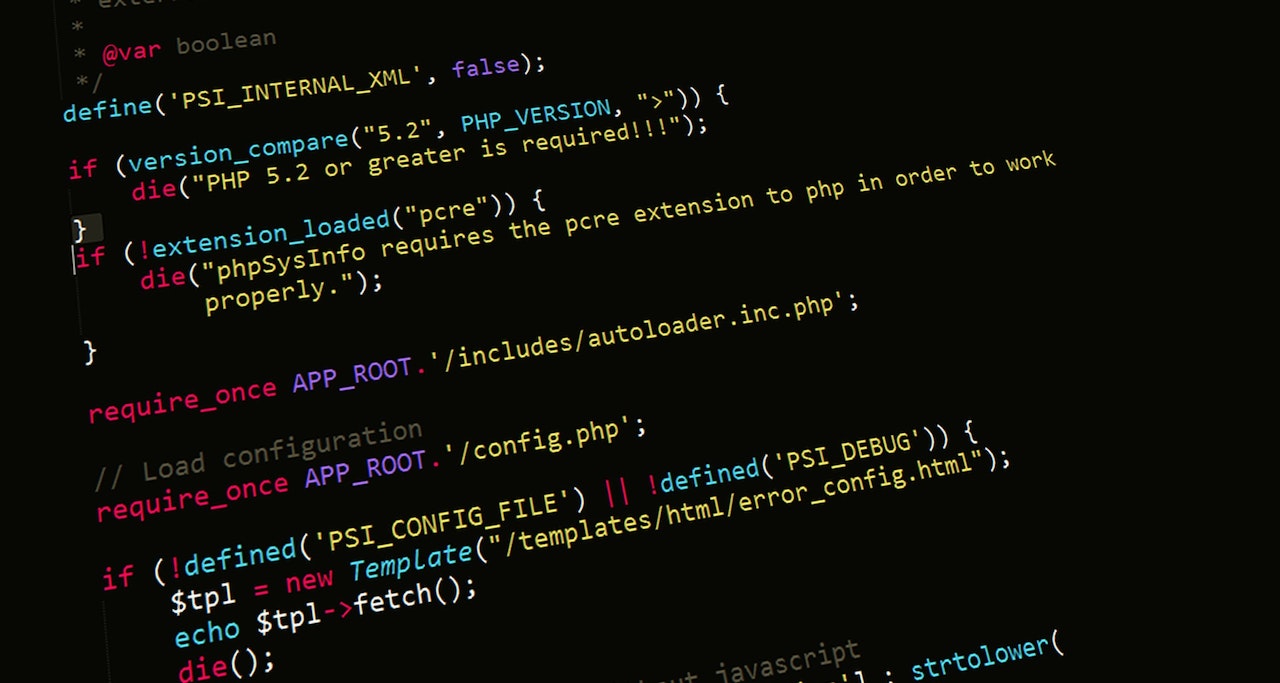10 Web App Security Tips: Guard Against Vulnerabilities

Web applications have become integral to our lives, enabling us to perform various tasks online. However, with the increasing reliance on these applications, the potential security risks have also grown. Cybercriminals are constantly seeking vulnerabilities to exploit for their malicious activities. As a result, it becomes imperative to understand the common security vulnerabilities in web applications and take necessary measures to prevent them. This blog will discuss ten common vulnerabilities and provide actionable steps to mitigate them effectively.
Injection Attacks
Injection attacks occur when an attacker can inject malicious code into a web application’s input fields, such as forms or search bars. This code can manipulate the application’s database or execute unauthorised commands. To prevent injection attacks, follow these best practices:
Sanitise and validate all user inputs: Ensure that all inputs are thoroughly checked for malicious code or unexpected characters. Implement input validation techniques to validate the data against predefined rules.
Use prepared statements or parameterised queries: You can prevent SQL injection attacks. These techniques ensure that user input is treated as data and not executable code, making it harder for attackers to manipulate the database.
Implement input validation and restrict special characters: Implement strict input validation to restrict the usage of special characters that could be used in injection attacks. Regular expressions can be used to validate and sanitise user inputs effectively.
Cross-Site Scripting (XSS)
Cross-site scripting is a vulnerability where an attacker injects malicious scripts into web pages viewed by other users. These scripts can steal sensitive information or perform unauthorised actions on behalf of the victim. To mitigate XSS attacks, consider the following steps:
Sanitise user inputs and implement output encoding: Sanitising user inputs means removing any potentially harmful code or characters before displaying them on web pages. Additionally, implement output encoding techniques to encode user-generated content, preventing the execution of malicious scripts.
Use Content Security Policy (CSP) headers: Implementing Content Security Policy (CSP) headers helps restrict the loading of external scripts on web pages. By specifying trusted sources for scripts, you can prevent attackers from injecting malicious scripts from unauthorised external sources.
Regularly update and patch software dependencies: Keep all software dependencies updated and apply patches regularly to address known vulnerabilities. Attackers can exploit outdated libraries or frameworks to carry out XSS attacks.
Cross-Site Request Forgery (CSRF)
CSRF attacks occur when an attacker tricks a user into performing unintended actions on a web application without their knowledge or consent. To prevent CSRF attacks, consider the following preventive measures:
Use anti-CSRF tokens: Implement anti-CSRF tokens in forms or AJAX requests to verify the request’s legitimacy. These tokens are unique for each user session and validate the request’s origin, ensuring it comes from a trusted source.
Implement same-site cookies: Same-site cookies restrict cross-origin requests by specifying that cookies should only be sent in requests from the same site. Set the SameSite attribute to Strict or Lax to prevent cross-origin requests from being executed automatically.
Educate users about the risks: Educate users about the risks of clicking on suspicious links or opening untrusted websites. By raising awareness and promoting safe browsing habits, users can become more cautious and less prone to falling victim to CSRF attacks.
Broken Authentication and Session Management
Weak authentication and session management practices can lead to unauthorised access to user accounts or session hijacking. To strengthen authentication and session management, consider the following measures:
Use strong password hashing algorithms: Store user passwords securely using solid passwords such as bcrypt or Argon2. These algorithms ensure that even if attackers obtain the password hashes, they cannot be easily reversed or cracked.
Implement multi-factor authentication (MFA): Multi-factor authentication provides an additional layer of security by requiring users to provide multiple pieces of evidence to verify their identity. This can include something they know (password), something they have (mobile device), or something they are (biometrics).
Regularly invalidate and regenerate session IDs: Invalidate and regenerate session IDs periodically to prevent session fixation attacks. By invalidating session IDs after a certain period of inactivity or upon logout, you can reduce the risk of unauthorised access to user sessions.
Security Misconfigurations
Misconfigurations in web application servers, frameworks, or platforms can expose sensitive information or provide unauthorised access to attackers. To avoid security misconfigurations, consider the following practices:
Regularly update and patch all software components: Keep all software components up to date with the latest secure versions. Regularly apply patches to address known vulnerabilities and minimise the risk of exploitation.
Follow the principle of least privilege: Grant only the necessary permissions to each component, user, or process. By following the principle of least privilege, you reduce the attack surface and limit the potential damage in case of a security breach.
Disable unnecessary services, ports, or functionalities: Disable any unnecessary services, ports, or functionalities that are not required for the proper functioning of the web application. This helps reduce the exposure to potential attacks by eliminating unnecessary entry points.
Insecure Direct Object References (IDOR)
IDOR occurs when a web application allows direct access to internal objects or resources without proper authorisation. To prevent IDOR vulnerabilities, consider the following preventive measures:
Implement proper access control mechanisms: Implement robust access control mechanisms to ensure that users can only access authorised resources. This includes appropriately validating user permissions and restricting access to sensitive resources based on user roles and privileges.
Use unique and unpredictable identifiers: Instead of using sequential or easily guessable values as identifiers for sensitive resources, use unique and unpredictable values. This makes it harder for attackers to guess or manipulate resource identifiers to gain unauthorised access.
Regularly test and audit access control policies: Regularly test and audit the application’s access control policies to identify and fix any vulnerabilities. Perform security assessments, penetration testing, and code reviews to ensure proper access controls are in place and functioning as intended.
Insecure Deserialisation
Insecure deserialisation can allow attackers to execute arbitrary code, tamper with data, or perform denial-of-service attacks. To prevent insecure deserialisation vulnerabilities, consider the following measures:
Only deserialise data from trusted sources: Deserialize data only from trusted sources to prevent attacks using malicious or tampered data. Implement strict input validation and ensure data is validated and sanitised before deserialisation.
Implement integrity checks: Implement integrity checks, such as digital signatures, to verify the integrity of serialised objects. This ensures that the serialised data has not been tampered with during transit or storage.
Regularly update and patch libraries or frameworks: Keep all libraries or frameworks that handle deserialisation up to date. Regularly apply patches and updates to mitigate known vulnerabilities and reduce the risk of insecure deserialisation attacks.
Unvalidated Redirects and Forwards
Attackers can exploit unvalidated redirects and forwards to redirect users to malicious websites or phishing pages. To prevent this vulnerability, consider the following preventive measures:
Validate and sanitise user-supplied redirect URLs: Ensure all URLs are validated and sanitised to ensure they belong to the same website. Implement strict validation checks to prevent attackers from injecting arbitrary URLs that could lead to malicious destinations.
Use server-side checks: Implement server-side checks to validate redirects and avoid relying solely on client-side mechanisms. Server-side checks provide an additional layer of security and help prevent attackers from manipulating client-side checks.
Implement appropriate response headers: Implement appropriate response headers, such as X-Frame-Options and Content-Security-Policy, to prevent clickjacking attacks. These headers help protect against attacks that trick users into interacting with malicious content disguised as legitimate web pages.
Security Testing and Monitoring Negligence
Neglecting security testing and monitoring can leave web applications vulnerable to various attacks. To ensure comprehensive security, consider the following practices:
Regularly perform security assessments: Regularly perform security assessments, including vulnerability scanning and penetration testing, to identify and address any security vulnerabilities. These assessments help uncover potential weaknesses in the web application and allow for timely remediation.
Monitor application logs: Monitor application logs for suspicious activities or anomalies. Regularly review logs and implement log analysis techniques to detect any signs of unauthorised access, unusual behaviour, or security incidents.
Stay updated with the latest security threats: Stay updated with the latest security threats and vulnerabilities by following industry best practices and staying informed about emerging security trends. This helps protect web applications against the latest attack techniques and vulnerabilities.
Insufficient Logging and Monitoring
More logging and monitoring can make detecting and responding to security incidents more manageable. To enhance logging and monitoring capabilities, consider the following measures:
Implement centralised logging: Implement centralised logging to collect and analyse logs from various web application components. Centralised logging helps consolidate log data and enables practical analysis for detecting security incidents or anomalous activities.
Set up real-time alerts: Set up real-time alerts for suspicious activities or security-related events. Real-time alerts immediately notify system administrators or security teams when potential security incidents occur, enabling prompt investigation and response.
Review and analyse logs: Regularly review and analyse logs to identify potential security incidents and take appropriate actions. Log analysis techniques, such as log correlation and anomaly detection, can help identify patterns or behaviours indicative of security breaches.
Conclusion
Understanding and addressing the common security vulnerabilities in web applications is crucial for maintaining data integrity, confidentiality, and availability. By following the preventive measures mentioned in this article, web application developers and administrators can significantly reduce the risk of security breaches. It is essential to prioritise security throughout the development lifecycle and stay vigilant against emerging threats to protect sensitive information.
Check out our other related posts if you enjoyed this one.
- The Rise of Collaborative Robots: Transforming Industries
- Unmasking Cyber Secrets: The Art of Deception Revealed!
- Decoding Cyber Threats: The Social Engineering Menace
- Unlock the Ultimate Quest: Ready Player One’s Audio Adventure!
- Revolutionising Wellness: Metaverse Therapy Unleashes Mental Liberation!
- Code Mastery Unleashed: Transform Your Skills with Clean Code by Robert C. Martin! 🚀
- Top Must-Have Tech Gadgets for Kids – Unbelievable Fun!
- Mastering Crypto Trading: Proven Strategies
- Unveiling Ethereum 2.0: Advancements & Impact
- AI Transforms E-Commerce: A Digital Revolution
Sign up for updates on this blog and our latest blog post if you enjoyed reading this one.
Share our blog content with your friends and colleagues via Facebook, Twitter, Pinterest, LinkedIn, email or WhatsApp links below and help them stay informed about the latest insights on business, marketing, finance, lifestyle, and society. Let’s build a knowledge-sharing community and empower each other to achieve our goals.
FAQ
What are injection attacks, and how can they be prevented?
Injection attacks occur when malicious code is injected into a web application’s input fields. It is essential to sanitise and validate all user inputs, use prepared statements or parameterised queries, and implement input validation to restrict special characters to prevent injection attacks.
How can cross-site scripting (XSS) attacks be mitigated?
To mitigate XSS attacks, it is recommended to sanitise user inputs and implement output encoding, use Content Security Policy (CSP) headers to restrict external scripts, and regularly update and patch software dependencies.
What measures can be taken to prevent Cross-Site Request Forgery (CSRF) attacks?
To prevent CSRF attacks, using anti-CSRF tokens, implementing same-site cookies, and educating users about the risks of clicking on suspicious links or opening untrusted websites is advisable.
How can broken authentication and session management vulnerabilities be addressed?
To strengthen authentication and session management, it is recommended to use strong password hashing algorithms, implement multi-factor authentication (MFA), and regularly invalidate and regenerate session IDs.
Credits
Featured image by Freepik.









